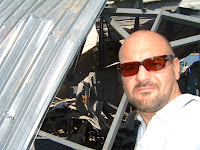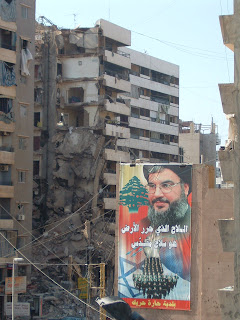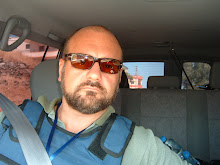 Why compare two different Colombian cities, with different back grounds, different developments and history? It has been deemed interesting put side by side the security contexts of Cali and Medellin for two reasons: both have similar factors threatening stability and security, and secondly I wanted to understand which kind of security measures were adopted in two diverse environments with similar characteristics. In other words, taking into account the slight difference between the two situations, which was the most successful security model adopted?
Why compare two different Colombian cities, with different back grounds, different developments and history? It has been deemed interesting put side by side the security contexts of Cali and Medellin for two reasons: both have similar factors threatening stability and security, and secondly I wanted to understand which kind of security measures were adopted in two diverse environments with similar characteristics. In other words, taking into account the slight difference between the two situations, which was the most successful security model adopted?I conducted my RSA in Cali and Medellin between January and February 2007 and at the first glance both towns appeared very interesting, the people friendly and the quality and quantity of commercial activities amazing.
CALI (Valle del Cauca District): In the area several armed actors (FARC, ELN, paramilitaries, recent armed entities like Aguila Negra, local criminal gangs, etc) are conducting their operations. The town is strategic to control the illicit cultivation of coca as well as for the routes towards the sea to export the final product. The government identified an area in the region (among locations Florida, Palira, Pradera) to facilitate the exchange of rebel prisoners with kidnapped people by guerrilla, trough the programme “Humanitarian Agreement”. The operation so far has not produced the expected results and the programme is currently suspended. In March 2009, the FARC wanted to exchange 22 captured members of the security forces for 500 guerrillas currently held in Colombian and U.S. prisons. The Colombian Government rejected such an exchange and demanded the FARC to unilaterally release their hostages. The FARC is suspected to also hold hundreds of civilians hostage for extortion. They are not part of the proposed exchange.
The centre of the town of Cali is well protected by police but in the surroundings illegal armed groups are almost free to circulate and conduct their business. The main threat in the region is related to the high concentration of armed actors. This factor can endanger travelers who can be caught up in the conflict between fire of armed groups. Wrong place and wrong moment.
The town of Cali has been divided in areas controlled by (at least) 20 different criminal gangs. Most of them have direct contact with organized guerrilla armed groups.
The actual government has improved greatly the security of Colombian urban areas, included Cali, leaving peripheries with little order and security. It is recommended to be properly informed about the security situation prior any movement in town since the situation is very volatile. The phenomenon of kidnapping is still high. Kidnappings take place for two main reasons: a “political” one, to put pressure on politician to obtain favors or exchange of “prisoners” or as an extortion to finance illicit activities. Often kidnapped people are sold by local criminal gangs to organized armed guerrilla groups. The threat of organized criminal activity is assessed as high.

Author at Medellin Botero's Park
MEDELLIN (Antioquia District). The district is of great strategic importance to both government and armed groups alike due to its controlling influence on many strategic routes throughout the North West. The town of Medellin is surrounded by hills and the region in general is rugged. The district has experienced high levels of violence over recent years between the paramilitaries, guerrillas, bandits and government forces. There are two distinct areas of conflict: the urban city of Medellin and rural areas in the surrounding district. The main armed groups are primarily struggling for control of territory and control of the strategic routes, mineral resources and infrastructure projects (e.g. hydro) in the countryside. Mines have been commonly used by the armed groups in some of the countryside areas around the district. There has been a considerable incidence of displacement of peoples (IDPs). The level of local criminality is high too. Several gangs control urban territory (with limitations in the city center “Poblado”) which are interconnected with guerrilla.
Within the district, local farmers try to flee the contested areas. Many are the illegal armed groups operating in the Antioquia district including FARC, ELN, paramilitaries and local criminal gangs. There is little law and order outside of the urban center. The armed groups are under continuous pressure both from the military and from rival gangs. Resources in the region are scarce, leading to potential increase of tension among populations.
Risk mitigation measures recommended for both locations:
Here a check list of recommended security measures for field offices deemed necessary to reduce the risk posed by both drug cartels activities and common criminality:
· Guards: well trained and equipped, ideally armed.
· Alarm: movement/vibration sensors should be installed throughout the office location, including parking lot, fence, etc.
· Video recording surveillance system: active on a 24/7 basis.
· Fence: ideally a proper (wall/barbed wire) high fence should protect premises. On top a signaled electric fence should be mounted.
· Dogs: If possible trained watchdogs can be used to improve security mainly during night hours. Dogs must be trained and properly managed.
· Minimal visibility: the visibility of the office and official vehicles should be minimal. Anonymity will help prevent assaults. Neither office nor vehicles should have external signs and indication about business conducted there.
· Blast Resistant Film (BRF): it is recommended that windows of the office to be treated with BRF.
· Snipers: as an extreme measure one or two member of the guard force can be positioned on top of the roof in strategic position in order to better surveil the activity in the roads in the close proximity of the building. This activity can be organized on a special occasion basis (when a special security threath occurs – political unrest and protests, violent events, criminal activities, etc) or on a regular basis.
· Vehicles: should be armored, equipped with bullet proof vests, helmets, radio communication systems (HF, VHF, cellular, sat phone), GPS tracking system, first aid kit, fire extinguisher, etc.
Within the district, local farmers try to flee the contested areas. Many are the illegal armed groups operating in the Antioquia district including FARC, ELN, paramilitaries and local criminal gangs. There is little law and order outside of the urban center. The armed groups are under continuous pressure both from the military and from rival gangs. Resources in the region are scarce, leading to potential increase of tension among populations.
Risk mitigation measures recommended for both locations:
Here a check list of recommended security measures for field offices deemed necessary to reduce the risk posed by both drug cartels activities and common criminality:
· Guards: well trained and equipped, ideally armed.
· Alarm: movement/vibration sensors should be installed throughout the office location, including parking lot, fence, etc.
· Video recording surveillance system: active on a 24/7 basis.
· Fence: ideally a proper (wall/barbed wire) high fence should protect premises. On top a signaled electric fence should be mounted.
· Dogs: If possible trained watchdogs can be used to improve security mainly during night hours. Dogs must be trained and properly managed.
· Minimal visibility: the visibility of the office and official vehicles should be minimal. Anonymity will help prevent assaults. Neither office nor vehicles should have external signs and indication about business conducted there.
· Blast Resistant Film (BRF): it is recommended that windows of the office to be treated with BRF.
· Snipers: as an extreme measure one or two member of the guard force can be positioned on top of the roof in strategic position in order to better surveil the activity in the roads in the close proximity of the building. This activity can be organized on a special occasion basis (when a special security threath occurs – political unrest and protests, violent events, criminal activities, etc) or on a regular basis.
· Vehicles: should be armored, equipped with bullet proof vests, helmets, radio communication systems (HF, VHF, cellular, sat phone), GPS tracking system, first aid kit, fire extinguisher, etc.









 This is the first of a series of posts regarding my professional career and my field security experiences in different countries.
This is the first of a series of posts regarding my professional career and my field security experiences in different countries.


















